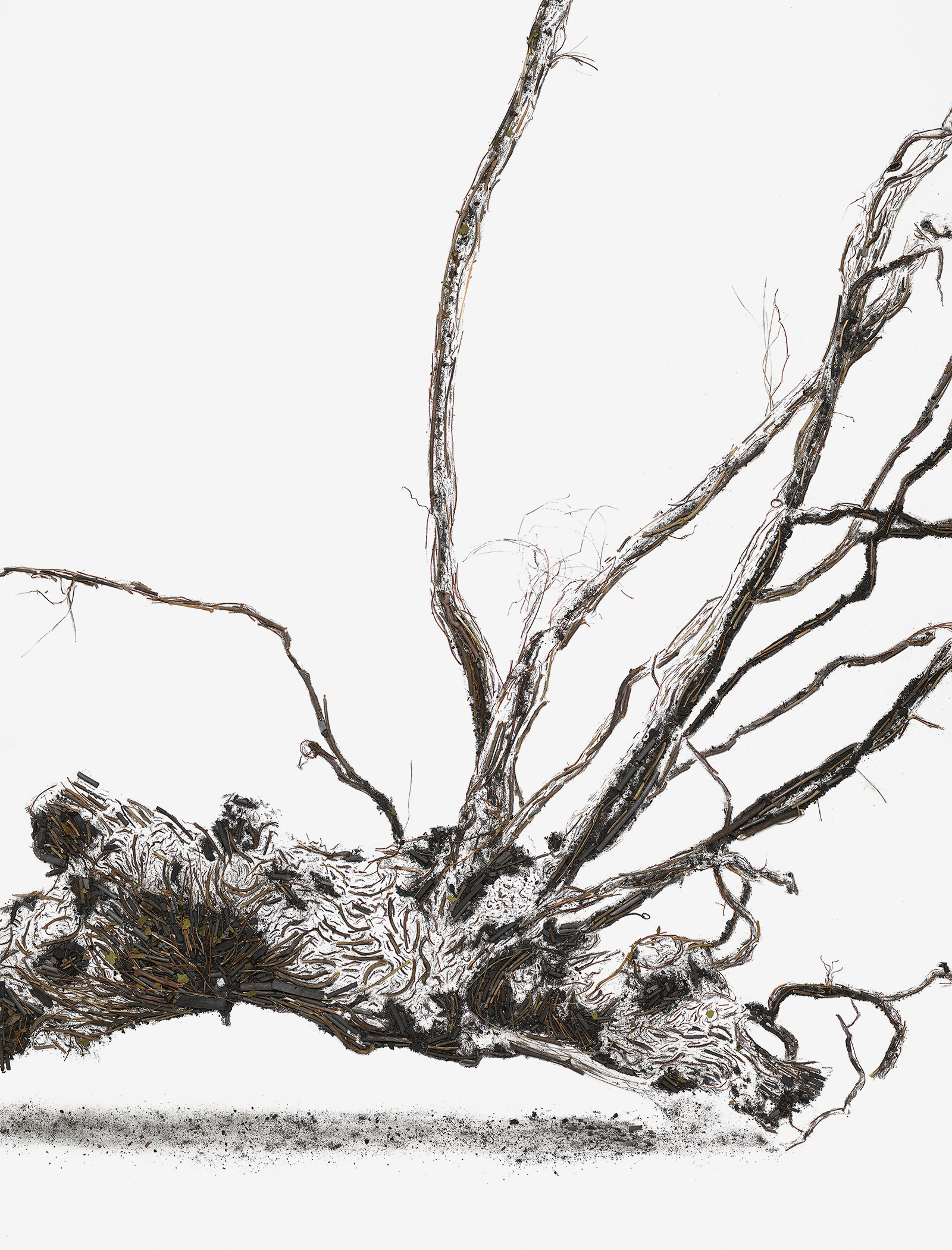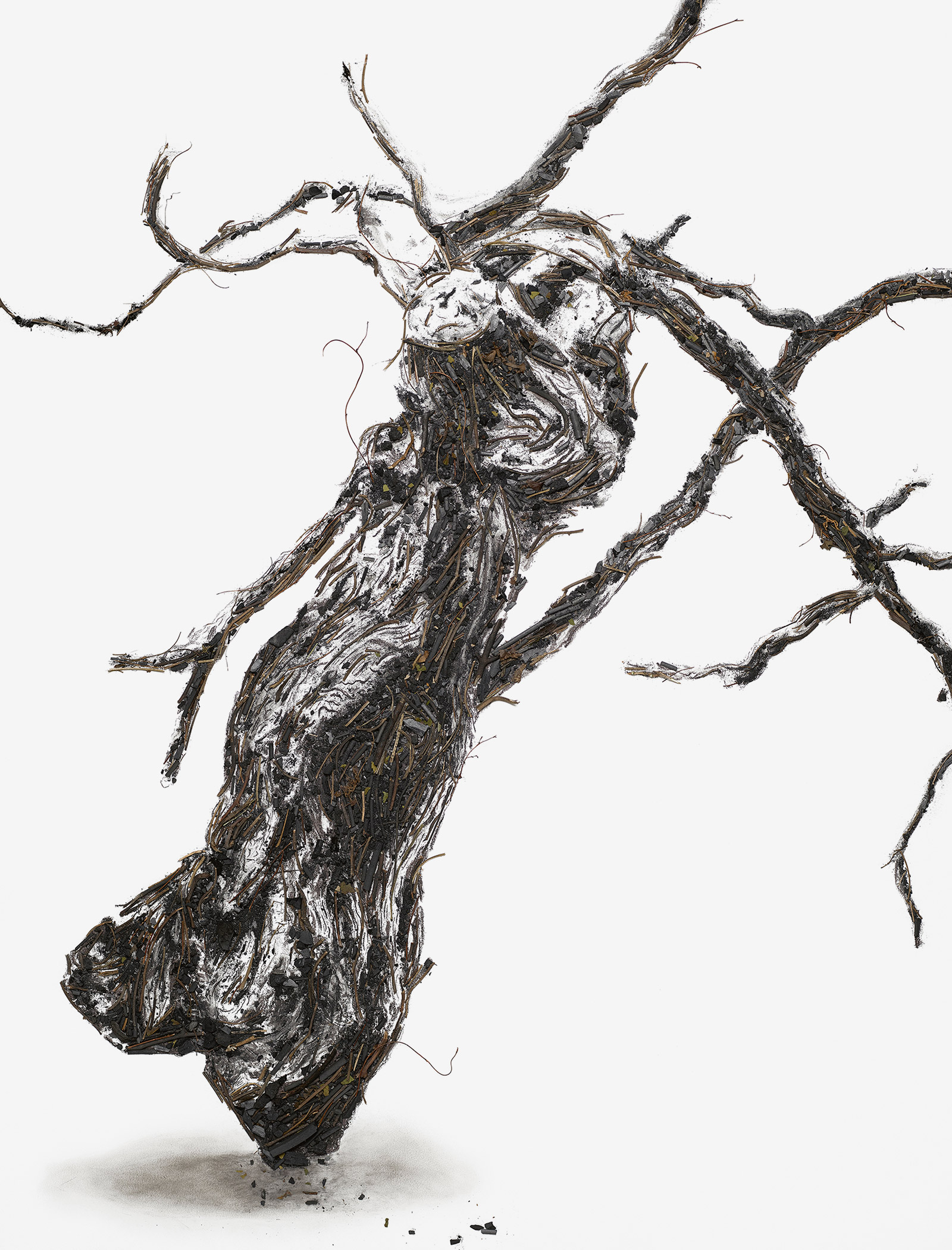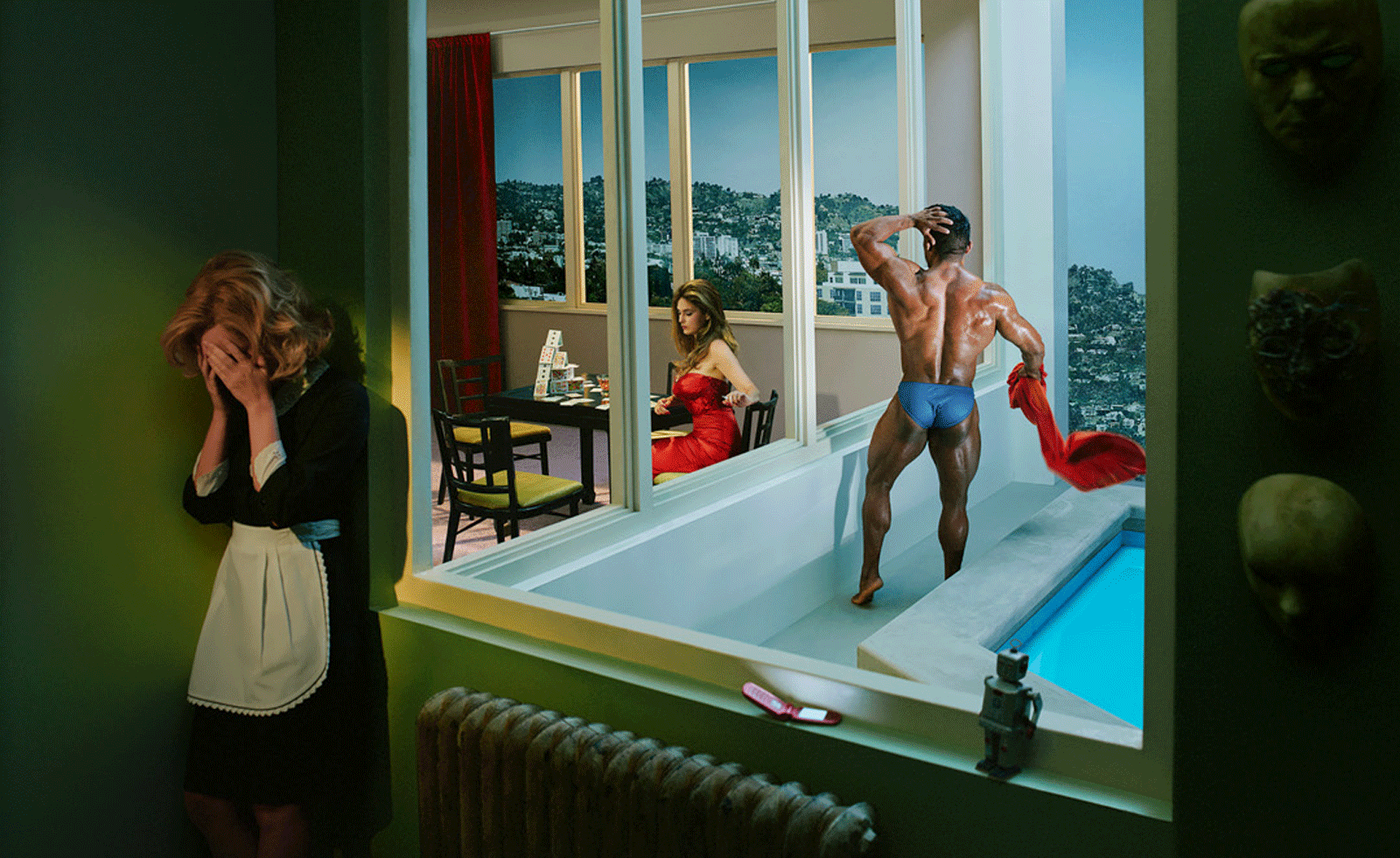Vik Muniz exposes his shared roots with Ruinart
The Brazilian artist magnifies the close relationship between man and nature in a series produced during his residency at the French champagne house

There’s long been debate about whether winemaking is an art or a science. For Brazilian artist Vik Muniz, who recently unveiled six photographic works in collaboration with champagne house Ruinart, there’s undeniably a great deal of creativity involved in creating fine wine. ‘Winemaking is a very complex thing. It requires a lot of knowledge, and somebody like Frederic Panaïotis [cellar master at Ruinart], is very creative,’ says Muniz. ‘It’s just as experimental as what I do as an artist.’
After gathering inspiration during an art residency on a vineyard belonging to Ruinart, Muniz has revealed his body of work, Shared Roots. Stemming from the French house’s bucolic surroundings, Muniz’s works explore the human and nature relationship between the winegrowers and vineyards as well as the terroir. ‘These are all connected. Everything comes from the ground, and everything comes from the soil,’ says Muniz.
On display until the end of March in Ruinart’s gallery, which is housed in one of its cellars in Champagne, Shared Roots will travel to over 30 art fairs including Frieze and Art Basel before returning to the Maison. Ruinart has worked with artists since 1896, including Piet Hein Eek, Liu Bolin and Maarten Baas. For the champagne brand, Muniz was an obvious next choice. ‘He is a Francophile: he speaks French, he is an epicurean, he loves food. He’s [also] an extremely lively, entertaining Brazilian, and we thought he is the best ambassador we could have,’ says Ruinart president Frédéric Dufour.
RELATED STORY
The theme Muniz chose for this project is one he’s been toying with for a while – even before the residency was offered to him. ‘I wanted to work with the idea of tree morphology. When I met Frédéric Panaïotis, he knew all about it. He can tell [so much about] leaves just by looking at them,’ says Muniz, who was deeply inspired by Panaïotis’ wealth of knowledge. In the six photographic prints, Muniz captures the vines through the use of natural elements like charcoal, leaves and blackened wood.
Trees are something Muniz has wanted to use as a subject, but never had the opportunity to. Until he had access to the Sillery vineyard on the Montagne de Reims. It was through the landscape and his discussions with Panaïotis – who offers a contrasting and unique skill set – that Muniz unlocked a certain creativity. ‘I’m very curious about working with people who are very passionate about what they do, and who work in something completely different to me. I have worked with scientists, poets, writers, perfume makers. I think this contrast creates a lot of knowledge.’ §

Flow Polyptych, 2019, by Vik Muniz.

Flow Vine, 2019, by Vik Muniz.

Flow Polyptych, 2019, by Vik Muniz.

An ampelographic representation of the Chardonnay plant was composed of leaves, shoots and bunches from the Sillery vineyards. This vast work was created in one of the UNESCO World Heritage crayère chalk cellars belonging to the Maison Ruinart in Reims.
INFORMATION
ruinart.com; vikmuniz.net
Receive our daily digest of inspiration, escapism and design stories from around the world direct to your inbox.
Mary Holland is a South African writer based in New York. She has written for HTSI, WSJ Magazine, Architectural Digest, Elle Decor, W Magazine, the Financial Times and more. She travels to Mexico frequently.
-
 Volvo’s quest for safety has resulted in this new, ultra-legible in-car typeface, Volvo Centum
Volvo’s quest for safety has resulted in this new, ultra-legible in-car typeface, Volvo CentumDalton Maag designs a new sans serif typeface for the Swedish carmaker, Volvo Centum, building on the brand’s strong safety ethos
-
 We asked six creative leaders to tell us their design predictions for the year ahead
We asked six creative leaders to tell us their design predictions for the year aheadWhat will be the trends shaping the design world in 2026? Six creative leaders share their creative predictions for next year, alongside some wise advice: be present, connect, embrace AI
-
 10 watch and jewellery moments that dazzled us in 2025
10 watch and jewellery moments that dazzled us in 2025From unexpected watch collaborations to eclectic materials and offbeat designs, here are the watch and jewellery moments we enjoyed this year
-
 What to see at Art Basel Miami Beach 2025 – nine brilliant booths
What to see at Art Basel Miami Beach 2025 – nine brilliant boothsThe buzzy Miami art fair (5-7 December) will bring together more than 280 leading international galleries and a packed week of pop-ups and parties – start with these must-see booths
-
 Unseen works meet immersive showstoppers as Yayoi Kusama hits Switzerland
Unseen works meet immersive showstoppers as Yayoi Kusama hits SwitzerlandAt the Fondation Beyeler in Basel, there are 300 works by Kusama to discover and it’s delightfully discombobulating
-
 Sam Falls is inspired by nature’s unpredictability in living works for Ruinart
Sam Falls is inspired by nature’s unpredictability in living works for RuinartThe artist creates works that are in-between photography and painting as part of Ruinart's Conversations with Nature series
-
 Ten things to see and do at Art Basel Paris 2025
Ten things to see and do at Art Basel Paris 2025Art Basel Paris takes over the city from 24-26 October. Here are the highlights, from Elmgreen & Dragset to Barbara Kruger and Dash Snow
-
 What to see at Switzerland’s art museums this autumn and winter
What to see at Switzerland’s art museums this autumn and winterWorld-class art, design and photography await at 11 Swiss museums. Take a video tour to peek inside, then plan your trip with our guide to the best exhibitions to see now and into 2026
-
 Why are we so obsessed with ghosts? From the psychological to the gothic, a new exhibition finds out
Why are we so obsessed with ghosts? From the psychological to the gothic, a new exhibition finds outGhosts have terrified us for centuries. ‘Ghosts: Visualizing the Supernatural’ at Kunstmuseum Basel asks what is going on
-
 Julian Charrière brings the sounds of the ocean to Ruinart’s chalk cellars in Reims
Julian Charrière brings the sounds of the ocean to Ruinart’s chalk cellars in ReimsJulian Charrière’s sound and light installation, ‘Chorals’, joins the worlds of environmental science and culture
-
 12 things not to miss at Art Basel 2025
12 things not to miss at Art Basel 2025Art Basel is bigger and better than ever. Avoid overwhelm, follow our definite what-to-see guide at this year's event (19-22 June)
